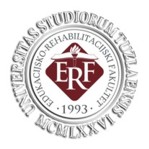SOME OF THE PREDICTORS OF THE VOCABULARY SCOPE OF DEAF AND HARD-OF-HEARING STUDENTS
Keywords:
Deafness, Hard-of-hearing, Vocabulary, PredictorsAbstract
The main aim of the research is to examine the characteristics of the development of vocabulary of hearing impaired children of primary school age, the structure of vocabulary of certain word classes, and to determine whether the degree of hearing impairment, time of emergence of hearing impairment, chronological age, gender and school achievement (grade) in the subject of respondent's native language affect the vocabulary scope of deaf and hardof-hearing students. The sample consisted of 65 hearing-impaired children of primary school age (grades 3rd to 8th). In accordance with the general objectives/aims, hypotheses, sample structure of respondents and analyzed variables, in the statistical processing of collected data, the following was applied: the method of descriptive statistics, variance analysis, discriminant analysis, and regression analysis. Based on the conducted research, we conclude that: there is a statistically significant difference in the vocabulary scope of certain word classes in respondents with hearing impairment. We also found that chronological age and school achievement (grade) in the subject of respondent's native language are relevant predictors of vocabulary scope and structure, while no statistically significant difference in the vocabulary scope of word classes in hearing impaired respondents was found in relation to gender, time of emergence of hearing impairment, and degree of hearing impairment
Downloads
Downloads
Published
How to Cite
Issue
Section
License

This work is licensed under a Creative Commons Attribution-NonCommercial-NoDerivatives 4.0 International License.







